My project for last weekend was another set of ampersand matchbox books.
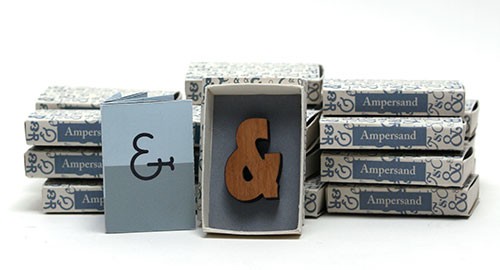
The March word for my prompt challenge book group was jump, a word with no less than 24 definitions, according to the OED. Chess was a theme used by half the people in my group. Laura had cut-offs from a book she’d made with chess imagery, and used them to make a book with nearly 200 pages. Each page was numbered and many had instructions of the variety “jump to page N” which created a sort of random walk through the book. Julia made a pop-out book, where parts of the images jumped off the pages as they were turned. And Suzanne rediscovered and finished a book she’d started several years ago with verbs about escaping—jump, fall, spring…
![]() I had a hard time getting going this month. I wanted to try handwriting whatever text I chose, but couldn’t come up with a theme. It’s spring, my garden is beginning to show life, and the bunnies will soon be back to feast on the new tiny shoots in my backyard. So I finally settled on rabbits and immediately found this promising stanza in the poem Darwin’s Bestiary by Philip Appleman.
I had a hard time getting going this month. I wanted to try handwriting whatever text I chose, but couldn’t come up with a theme. It’s spring, my garden is beginning to show life, and the bunnies will soon be back to feast on the new tiny shoots in my backyard. So I finally settled on rabbits and immediately found this promising stanza in the poem Darwin’s Bestiary by Philip Appleman.
3. THE RABBIT
a. Except in distress, the rabbit is silent,
but social as teacups: no hare is an island.
(Moral:
silence is golden—or anyway harmless;
rabbits may run, but never for Congress.)
b. When a rabbit gets miffed, he bounds in an orbit,
kicking and scratching like—well, like a rabbit.
(Moral:
to thine own self be true—or as true as you can;
a wolf in sheep’s clothing fleeces his skin.)
c. He populates prairies and mountains and moors,
but in Sweden the rabbit can’t live out of doors.
(Moral:
to know your own strength, take a tug at your shackles;
to understand purity, ponder your freckles.)
d. Survival developed these small furry tutors;
the morals of rabbits outnumber their litters.
(Conclusion:
you needn’t be brainy, benign, or bizarre
to be thought a great prophet. Endure. Just endure.)
Here are a few pages from the book I made. It was quite different to write the lines without the help of the grid I’ve been practicing with. I notice I went back to non-slant almost immediately. And despite trying to work out the line length and kerning ahead of time, I need more practice on that as well!
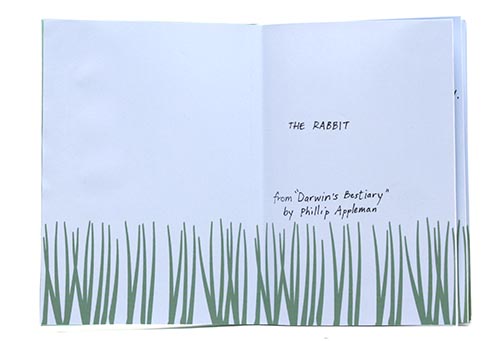
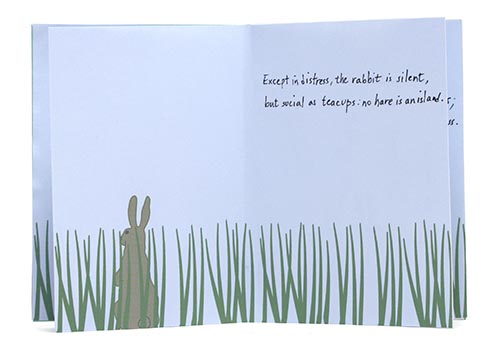
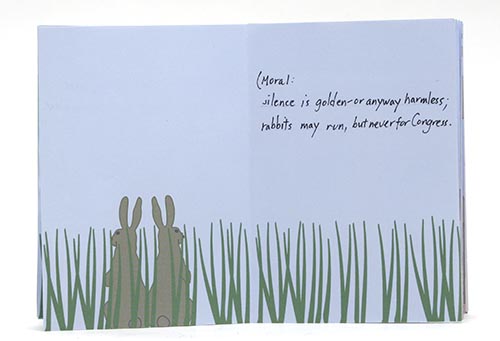
The book continues with jumping rabbits…
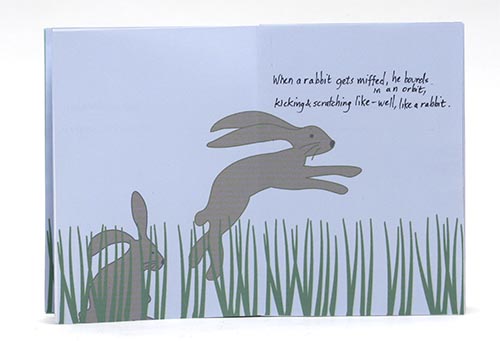
And now the rabbits are in Sweden, starting to multiple
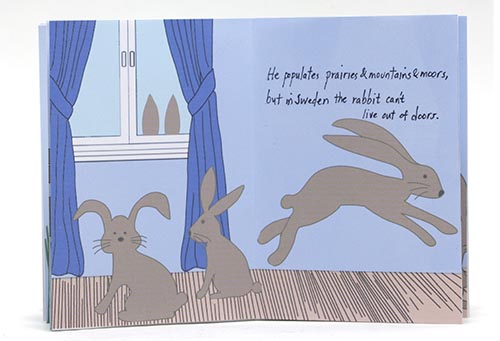
The book & poem continue, and it ends with the rabbits taking over (or enduring….)
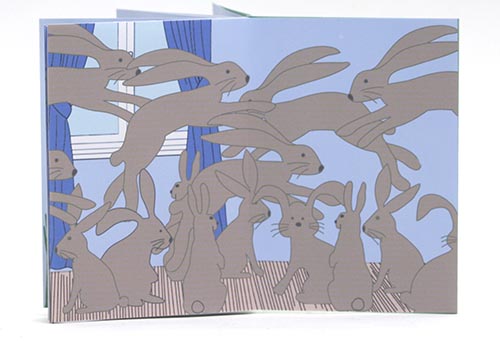
Carol Pallesen wrote some very nice ampersands for us during her workshop last week-end. Then I found this nice poster of ampersands available through Adobe’s typekit. Click on the image below to get a wider, bigger image.
I have a new book kit in my shop on my website. It’s for an accordion gallery book, which has room to display 9 photos, illustrations, whatever you want. I taught this structure to my local book group in January (55 people!). Here are 2 examples, and you can see more examples or get the kit here.
After I posted about my experiences in Carol Pallesen’s tiny writing class, Karen wrote and asked why I thought making an “S” was so hard. Simply, it’s the curves. As I’ve practiced over the last week, the letters that are hardest (aside from s) are o and e. Carol suggested we write these in 2 strokes, starting at 11 o’clock, drawing the left side of the curve, lifting the pen and drawing the right side. For someone who always starts at the top of the letter or at 1 o’clock, this has been a hard habit to break. And remembering to write the letter as 2 strokes seems to be impossible.
![]() Below I’ve shown Carol’s lovely handwriting, followed by her ‘s’ example. Carol suggested we draw the s with 3 strokes (at the right is my attempt to show the 3 stroke progression). Below that is one of my practice lines, where I find the second stroke to be the hardest. Karen also asked about the slanted-ness of the letters. Here is a PDF of my practice paper (it has a very light grid to help me keep the lines straight and letters slanted the proper amount). I’m learning that a 5% slant is really not very much.
Below I’ve shown Carol’s lovely handwriting, followed by her ‘s’ example. Carol suggested we draw the s with 3 strokes (at the right is my attempt to show the 3 stroke progression). Below that is one of my practice lines, where I find the second stroke to be the hardest. Karen also asked about the slanted-ness of the letters. Here is a PDF of my practice paper (it has a very light grid to help me keep the lines straight and letters slanted the proper amount). I’m learning that a 5% slant is really not very much.
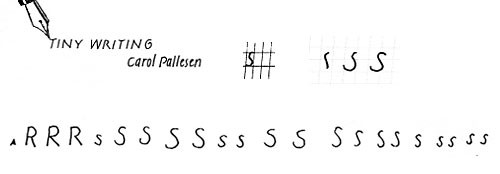
In the “Tiny Writing” class I took last weekend (see more about the class here), one of the alphabets we learned was “Clothesline Caps,” where the letters are connected by a horizontal line on top and bottom and then the spaces in between are colored.

It’s quite festive, don’t you think? The picture above is the collaborative project we did in the class—on a 16-fold accordion, each of us wrote our initials and colored them. The horizontal lines connected the panels, so that when the accordion is folded, there a hit of color on the foreedge. Since we did a book for each student, it was really good practice for making the letters. I think by the last one I finally wrote an “S” I actually liked.
![]() To get a better idea of the letters, below is an example sheet of the alphabet done by Kath Harney. And below that are examples of the font on cards by her friend Randi Kander.
To get a better idea of the letters, below is an example sheet of the alphabet done by Kath Harney. And below that are examples of the font on cards by her friend Randi Kander.